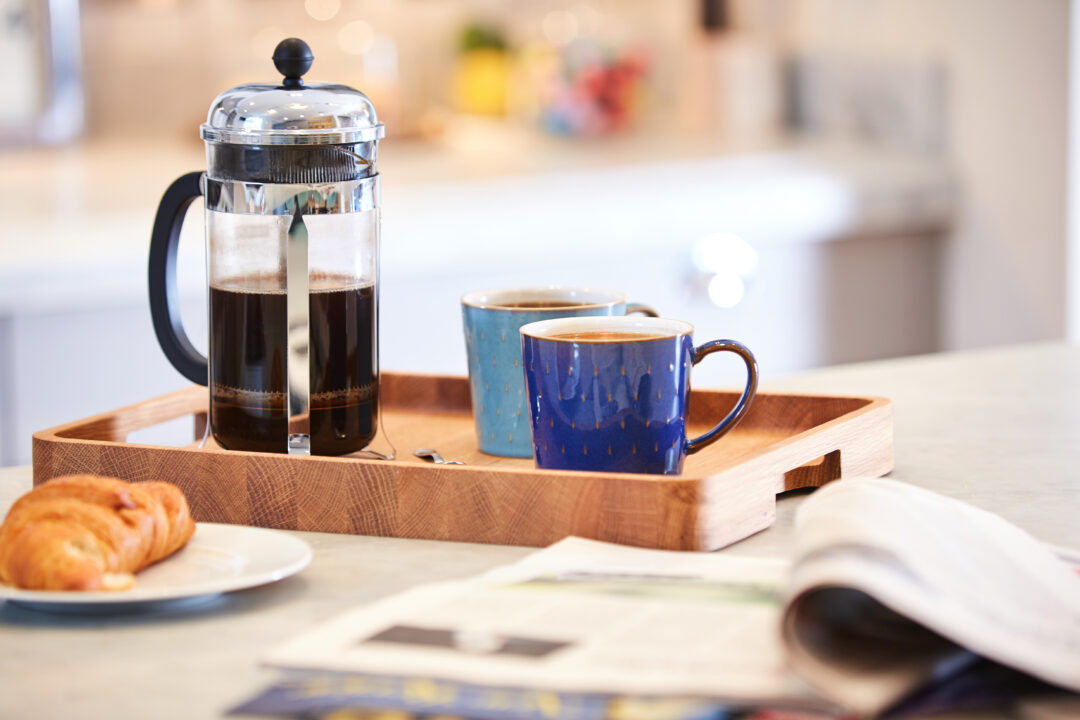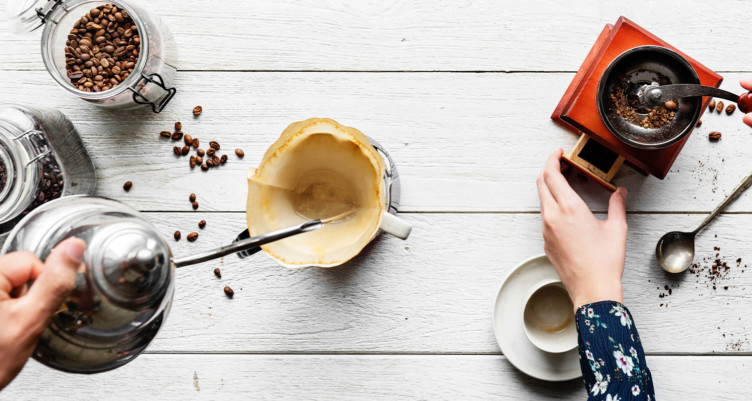Mastering Coffee Brewing Methods: Essential Techniques for Every Coffee Lover
Mastering Coffee Brewing Methods: Essential Techniques for Every Coffee Lover
Blog Article
The Science Behind Coffee Brewing: How Temperature and Time Affect Your Beverage
Recognizing the scientific research behind coffee developing discloses that temperature level and time are not simple variables but pivotal elements that dictate the beverage's flavor account and total high quality. The ideal developing temperature typically falls in between 195 ° F and 205 ° F, while the duration of extraction varies substantially across various approaches. This interaction of factors can lead to a mug that is either disappointing or fascinating. As we check out the nuances of these elements, the concern occurs: just how can one efficiently equilibrium temperature level and time to achieve that excellent brew?
The Chemistry of Coffee Extraction
The chemistry of coffee extraction dives into the detailed processes that change raw coffee beans into the aromatic beverage enjoyed worldwide. This change mainly entails the solubility of various compounds existing in the beans, which are influenced by factors such as grind size, water high quality, and the developing technique used.
During the developing procedure, hot water functions as a solvent, extracting soluble compounds, consisting of high levels of caffeine, sugars, lipids, and acids, from the coffee grounds. Each substance adds to the flavor account, scent, and body of the last drink. Acids are liable for appetizing and intense notes, while oils contribute to an abundant mouthfeel.
The extraction process is not consistent; various compounds dissolve at various rates. The preliminary stages of developing remove acids and sugars, causing a pleasurable level of acidity, while prolonged removal can result in anger because of over-extraction of unfavorable compounds. Recognizing these chemical communications is essential for enhancing brewing strategies, as the equilibrium in between removal time and water temperature level can significantly affect the total quality of the coffee. Inevitably, mastering the chemistry of coffee extraction is key to accomplishing a flavorful and all-around cup.
Suitable Brewing Temperatures
Finding the appropriate developing temperature is necessary for opening the full possibility of coffee flavors and scents - coffee brewing methods. Research indicates that the optimum variety for brewing coffee exists between 195 ° F to 205 ° F(90 ° C to 96 ° C) Within this range, the extraction process efficiently dissolves the preferable soluble compounds in coffee beans, bring about a delicious and balanced mug
Brewing at reduced temperature levels, such as below 195 ° F(90 ° C ), might lead to under-extraction, yielding a weak and acidic brew with soft flavors. Alternatively, developing at temperature levels exceeding 205 ° F(96 ° C) can lead to over-extraction, producing a bitter and severe taste due to the too much dissolution of unfavorable substances, such as tannins.
Furthermore, the perfect developing temperature can differ relying on the coffee bean kind and roast level. Lighter roasts often benefit from slightly higher temperature levels to boost their complicated taste profiles, while darker roasts might be better suited to lower temperature levels to mitigate bitterness.
Ultimately, keeping precision in brewing temperatures is critical for accomplishing a harmonious balance of flavors, guaranteeing that every mug of coffee supplies a satisfying sensory experience.
Impact of Developing Time
Developing time plays a pivotal duty in figuring out the taste account and general high quality of coffee. The extraction process, which affects the taste, fragrance, and body of the beverage, is greatly dependent on exactly how long the coffee grounds touch with water. Much shorter brewing times can cause under-extraction, leading to a weak or sour taste, as inadequate soluble compounds are liquified. On the other hand, long term brewing can result in over-extraction, where unwanted substances are launched, causing a bitter or astringent taste.
Optimal brewing time differs relying on the approach utilized and the work dimension of the coffee. For example, a French press usually needs concerning four mins, while espresso extraction is generally completed within 25 to 30 seconds. It is essential to adjust developing time in conjunction with other variables, such as water temperature level and coffee-to-water proportion, to achieve the preferred flavor profile.
Understanding the effect of brewing time enables coffee enthusiasts to fine-tune their brewing techniques, eventually boosting the sensory experience of their mug (coffee brewing methods). With mindful focus to this variable, one can unlock the complete potential of the coffee, disclosing its special qualities and subtleties
Developing Techniques and Their Results

For example, techniques like French press her explanation and chilly mixture permit a longer steeping time, resulting in a fuller body and robust taste due to raised extraction of oils and soluble solids. Conversely, coffee developing makes use of high stress and a shorter extraction time, producing a focused shot that emphasizes intense flavors and a rich crema.
Pour-over methods, such as Chemex or V60, use a more controlled removal procedure, allowing the maker to control circulation rate and water distribution, which can enhance brightness and clarity. Percolation methods cycle water via the coffee premises several times, leading to a more powerful, typically bitter flavor.
Last but not least, using paper filters versus steel filters can also influence the final taste; paper filters normally generate a cleaner cup by trapping oils and great particles, while steel filters allow even more oils to go through, adding to a fuller mouthfeel - coffee brewing methods. Comprehending these subtleties can raise the coffee experience dramatically
Tips for Improving Your Mixture
A well-executed mixture can change even the most basic coffee into an impressive click this experience. Grind the beans just prior to brewing to make best use of quality, ensuring the grind dimension matches your brewing technique-- coarser for French press and finer for coffee.
Water top quality plays a vital role; usage filtered water without pollutants. The optimal developing temperature varies in between 195 ° F and 205 ° F(90 ° C to 96 ° C ) As well warm can swelter the coffee, while too trendy may under-extract flavors.
Timing is similarly vital. For immersion approaches, soaking for 3 to five minutes is optimum, whereas drip methods commonly take about 5 mins. Experiment with brew times to discover your favored strength.

Final Thought
In recap, the intricate partnership in between temperature level and time is paramount in the coffee brewing process. Sticking to ideal brewing temperature levels between 195 ° F and 205 ° F, along with specific timing tailored to every technique, makes certain the preferred flavor profile is accomplished. Recognizing these scientific concepts encourages individuals to improve their developing techniques, eventually resulting in a much more well balanced and delightful coffee experience. Mastery of these aspects is crucial for any type of coffee lover seeking quality in their drink.
Understanding the scientific research behind coffee brewing discloses that temperature level and time are not plain variables but crucial elements that determine the drink's flavor profile and general quality. Understanding these chemical interactions is vital for maximizing brewing techniques, as the equilibrium in between extraction time and water temperature can significantly affect the overall quality of the coffee.Developing time plays a critical role in identifying the taste account and total high quality of coffee. By focusing on these aspects-- bean high quality, grind size, water temperature level, soaking time, and ratio-- you can boost your coffee brewing procedure, resulting in a constantly premium cup.
In summary, the intricate connection between temperature and time is paramount in the coffee brewing procedure.
Report this page